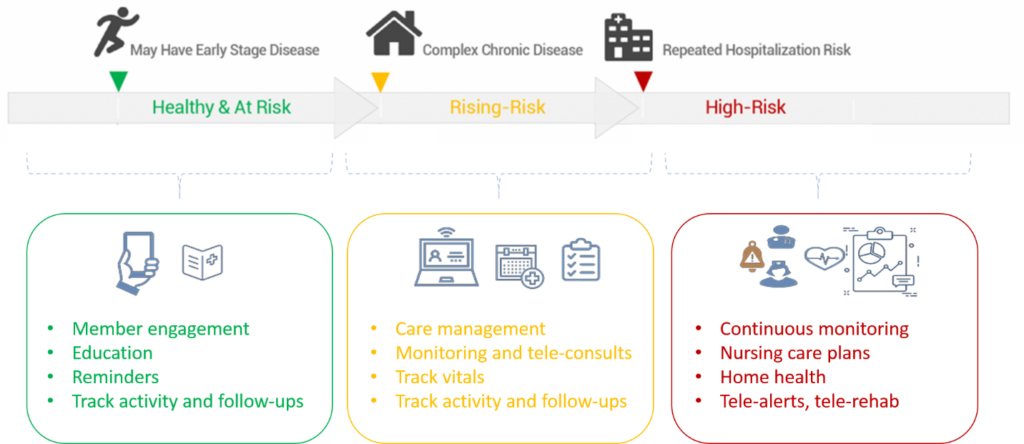Addressing Rising Risks
Insurance companies today are faced with the rising risk profile of members and the increasing cost of hospitalization and care. This directly affects the claim ratio and profitability of insurance providers. The underlying reasons for this are:
- Increase in non-communicable diseases—such as heart disease (which is expected to go up 44%), stroke (up 35%) and diabetes (up 87%) in 15 years (from PwC survey in Asia region)
- Ageing population—the elderly are expected to make up more than 20% of the ASEAN population, which is higher than the world average of 16%
- Rising hospitalization costs due to increased use of Emergency (ER), readmission and avoidable hospitalizations
Opportunities to Address Risk
Technology advancements and the pervasive use of mobile technology have opened up new opportunities to manage and contain risk. The approach to addressing risk with technology involves:
- Segmentation of members by risk profile — Using a combination of clinical analytics, demographic profiling and health risk assessments (HRA) to quantify risk
- Intervention programs and methods that are adaptable based on risk profiles and specific conditions such as diabetes, hypertension and obesity
- Tele-health and monitoring to support the collection of vitals and parameters to guide intervention programs and assess progress
- Population health analytics to understand the impact of intervention programs on risk profile and claims ratios
This approach is illustrated below:

Business Impact
The approach outlined above leads to:
- Lowering of risk. Moving 10% of members from High Risk status to Medium or Low risk gives the ROI of 6 to 1 (Harvard Business Review Study)
- Increased member satisfaction and retention
- Reduced re-hospitalization
- Lower cost of care (esp. costs related to elderly care and home care)
Request a demo
And we'll get back to you within 48 hours.
Sign Up for FREE Consultation!

